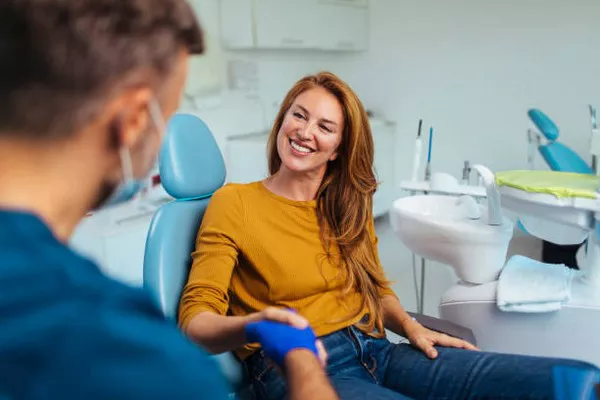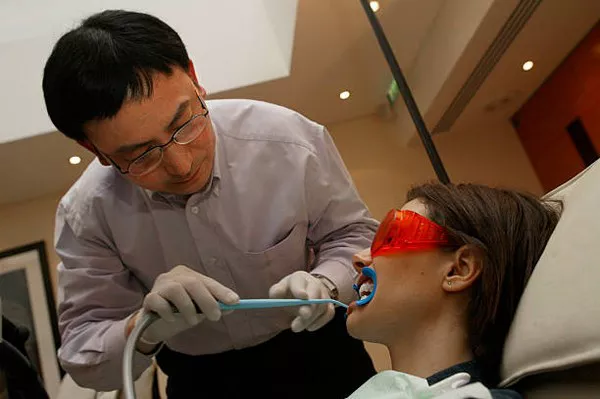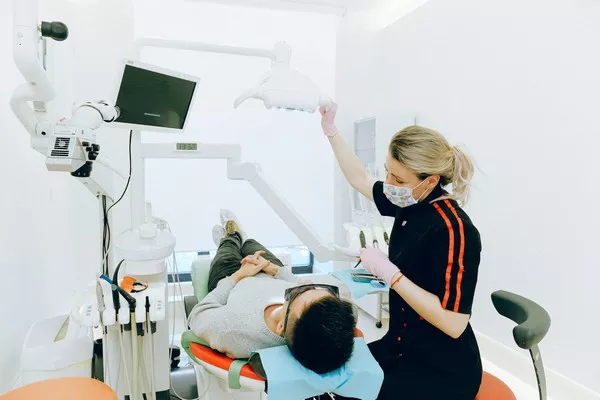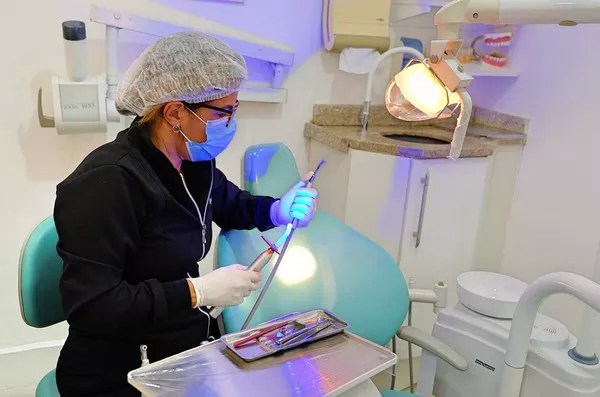This graphic shows the whole process of dental cleaning. After reading it, you can’t leave it without a healthy periodontal.
Two, the tooth surface breeding plaque and tooth stone.
Three, when dental plaque and dental stones accumulated to a certain extent, the gums begin to become red and swollen.
Four, dental plaque and dental stones have not been removed in time, further gingival swelling, accompanied by gingival bleeding phenomenon.
Five, at this time in the gingiva below also exist hard tooth stone.
These dental stones begin to stimulate resorption of the alveolar bone.
Six, the tooth stone below the gum further stimulates the alveolar bone, leads to a lot of bone resorption reduction, the alveolar bone is destroyed.
Seven, at this time, our daily brushing can not achieve the complete removal of dental plaque and dental stone effect, especially the part below the gum, toothbrush can not touch.
Eight. After brushing the teeth, the soft plaque on the tooth surface can be removed, but the hard dental stones are difficult to be completely removed, and the stones below the gums can also not be removed by the toothbrush.
Nine, at this time the patient needs to go to the dental clinic to clean the teeth, the doctor will first use ultrasound to remove the more hard tooth stones on the tooth surface.
Ten, ultrasound is to remove the hard tooth stone on the tooth surface by vibration, rather than by grinding to remove, so the patient does not have to worry about the teeth will be washed thin.
Eleven, ultrasonic teeth cleaning head surface is smooth round, so will not produce grinding effect on the teeth, the same removal of dental stones is also a whole piece of a whole piece, if it is grinding, the removal of dental stones should be powdered, which can also prove that teeth cleaning will not wear thin teeth.
12. When cleaning teeth, the doctor’s skill is also very important, gentle operation will make the patient feel very comfortable.
13. Ultrasonic cleaning removes plaque and dental stones on the surface of the teeth, but there will still be redness and swelling of the gums.
Fourteen, gingival redness and bleeding, largely related to the gingival stone below, these deep buried in the gingival stone surface carries a lot of bacteria, these bacteria will stimulate the gingival inflammation, redness and bleeding.
15. Calculus below the gums should also be removed during dental cleaning, usually by deep ultrasonic cleaning or manual subgingival scraping.
Manual subgingival scaling can be cleaner.
16. Carefully remove the stone and plaque on the root surface of the tooth and the cementum surface eroded by plaque with a manual curette.
17. After subgingival scraping, the tooth surface and root are smooth, which greatly reduces the number of bacteria in the periodontal pocket.
18. For patients with periodontitis, tooth cleaning and subgingival scraping are considered to be very important treatment methods. Many people know that tooth stones need to be cleaned, but few people know that tooth stones above the root need to be subgingival scraping.
19. After supringival ultrasound scaling and subgingival scaling, the gums usually become better within a week.
The color of the gums will improve, and so will the bleeding.
20. After cleaning, another important step is polishing.
The purpose of polishing is to make the tooth surface more smooth and clean. Smooth tooth surface is not easy to deposit pigment and dental stones.
21. Polishing should be stained with polishing paste, polishing paste and toothpaste are different, polishing paste particles are significantly larger than the size of the friction agent inside the toothpaste, so the polishing effect will be better.
But such polishes are best used by a doctor.
22. The polished teeth are bright and fresh. Many patients will feel that if the teeth are not polished, the tooth surface will be very uncomfortable.
Polishing is as important as periodontal.
24. Finish polishing.
25. After supramingival scaling and subgingival scaling, many people will find that the gap between the teeth has become larger, and many people will misunderstand that the gap will be washed by tooth cleaning.
In fact, this is a wrong idea. The reason why you don’t feel gaps in your teeth before cleaning is because those gaps are filled with dental stones that your tongue can’t feel when you lick them. When the stones are removed, the gaps will be revealed.
26. After the end of periodontal treatment, there will be different degrees of gingival retreat. In some cases, this gingival retreat is irreversible.
If you want to prevent the atrophy of the gums, the only way is to wash the teeth once a half year, remove the tooth stones on the tooth surface in time, and prevent the tooth stones from pressing the gums and causing the gums to retreat.
27. This picture shows the extent of gingival retraction. In fact, gingival retraction is related to alveolar bone resorption, which is caused by the accumulation of dental stones, which in turn leads to gingival retraction and root exposure.
So we must clean teeth regularly to prevent periodontitis.































